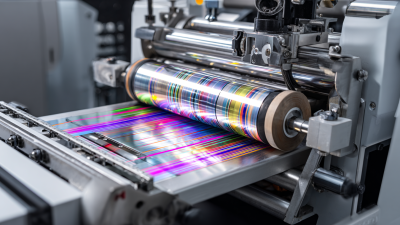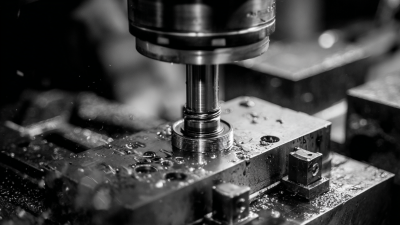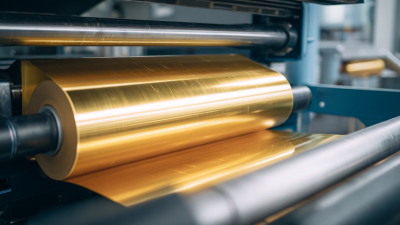Leave Your Message
-
Phone
-
Whatsapp
-
E-mail
Die cutting is a transformative process that has revolutionized various industries by allowing for precision and creativity in product design. According to industry expert John Smith, a leading figure in the die cutting sector, "Die cutting not only enhances production efficiency but also opens doors to innovative designs that were previously unimaginable." This statement underscores the significance of die cutting, as it serves not just as a method of shaping materials but as a catalyst for creative possibilities.
The die cutting process involves the use of specialized machines and tools to cut, shape, and emboss materials such as paper, plastic, and fabric with exceptional accuracy. The benefits of die cutting extend far beyond mere aesthetics; they include cost-effectiveness, speed of production, and the ability to produce consistent results on a large scale. As companies increasingly seek to differentiate their products in crowded markets, the applications of die cutting have expanded dramatically, influencing sectors from packaging to fashion and everything in between.
As we delve deeper into the world of die cutting, we will explore the fundamental aspects of this technique, its myriad advantages, and the diverse applications that highlight its importance in modern manufacturing and design. Understanding die cutting is essential for anyone looking to leverage its potential in their business or creative endeavors.

Die cutting is a popular manufacturing process used to create specific shapes and designs from a variety of materials such as paper, cardboard, and fabric. The technique involves the use of a die, a specialized tool that cuts, scores, or embosses material into desired forms. By applying pressure with the die, manufacturers can achieve precise and intricate designs that are difficult to replicate with traditional cutting methods. This process is crucial for many industries, including packaging, textiles, and crafting.
Understanding the techniques involved in die cutting is essential for harnessing its benefits. There are several methods, including flatbed die cutting and rotary die cutting, each suited for different applications and materials. The advantages of die cutting include efficiency, consistency, and the ability to scale production, making it an ideal choice for both small-scale crafts and large manufacturing runs. Its versatility allows for creative designs in everything from greeting cards to complex packaging solutions, demonstrating its importance in modern production practices.

Die cutting is a manufacturing process that involves using a 刀具 to cut specific shapes and designs from materials like paper, cardboard, plastic, and metal. The process begins with the creation of a die, which is a specialized tool designed to achieve the desired cut. Once the die is ready, it is mounted onto a die cutting machine. These machines can be either manual or automated, depending on the scale of production.
The next step involves feeding the material into the machine, where the die comes into contact with it. The pressure from the die precisely cuts through the material, producing consistent shapes with clean edges. After the cutting phase, the waste material is typically removed, leaving behind the well-defined shapes ready for further processing or direct use. Die cutting is highly versatile and widely used in various industries for applications like packaging, crafting, and product design, thanks to its efficiency and ability to create intricate designs.

Die cutting is a versatile manufacturing process that offers numerous benefits across various industries. One of its primary advantages is precision. With die cutting, companies can achieve intricate designs and exact dimensions, which is crucial in sectors such as packaging and textiles. This level of accuracy ensures that parts fit together seamlessly, enhancing the quality of the final product while reducing waste during production.
Another significant benefit of die cutting is its efficiency. The process allows for high-speed production, which means larger quantities can be manufactured in a shorter time frame compared to traditional cutting methods. This not only increases productivity but also reduces labor costs, making it an economical choice for industries like automotive and electronics that require bulk production of components. Additionally, the die cutting process is adaptable, able to handle a wide range of materials from paper to metals, thus providing flexibility for businesses to innovate and meet changing market demands.
Die cutting is an essential process in the packaging and design industries, allowing for precise shapes and sizes that enhance product presentation and functionality. From intricate designs for promotional packaging to simple forms for everyday products, die cutting provides versatility that enables manufacturers to create custom solutions tailored to specific needs. The technology streamlines production processes, reduces waste, and supports high-volume runs, making it a preferred choice for many brands.
The upcoming Labelexpo Southeast Asia 2025 is set to showcase the latest advancements in die cutting technology, which will be vital for industries looking to optimize their packaging strategies. The event will highlight not just traditional die cutting methods but also innovative techniques that integrate with new machinery aimed at enhancing efficiency and creativity in packaging design. As the global die cut lids market is projected to reach USD 1,840.5 million by 2034, the ongoing trends towards sustainability and custom packaging solutions only underscore the importance of die cutting in modern manufacturing. This trend illustrates how die cutting is not just a functional process but also a driver of creativity in product packaging.
As we look towards 2025, the die cutting industry is poised for significant technological advancements and innovations. Automation and digital technologies are becoming increasingly integrated within the die cutting process, enhancing precision and efficiency. Future trends indicate a stronger reliance on smart technology, such as AI and machine learning, which will enable manufacturers to optimize their workflows and minimize material waste. Additionally, the development of eco-friendly die cutting machines is expected to gain traction, aligning with the growing emphasis on sustainability in production processes.
Tips: When considering die cutting technologies for the future, prioritize equipment that not only boosts productivity but also adheres to sustainable practices. Opt for suppliers who are already innovating in eco-friendly materials and energy-efficient machines that promise to reduce your carbon footprint while maintaining output quality.
Moreover, the rise of custom die cutting services is set to transform retail and packaging sectors. The ability to create tailored designs on-demand will cater to niche markets and individual consumer preferences, stimulating creativity and diversity in product offerings. Companies that embrace these trends will not only improve their responsiveness to market needs but also foster stronger customer relationships through personalized products.
Tips: Keep an eye on emerging die cutting software that allows for intricate customizations with ease. Investing in training for your team on these advanced tools can help you stay ahead of the competition and meet consumer demands effectively.






